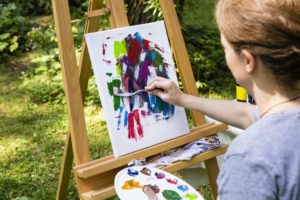- Introduce a variety of textures to stimulate toddlers’ sense of touch.
- Engage their sense of smell with fragrant spices, flowers, herbs, and books.
- Incorporate certain music and sounds to enhance your toddler’s auditory senses.
- Explore visual stimulation through toys, puzzles, and picture books.
- Utilize soft play areas for toddlers to promote gross motor skills.
Engaging your toddler’s sensory skills is a fun and interactive way to play and promotes their cognitive, physical, and emotional development. You can enhance their learning and overall sensory experience by providing stimulating activities that target their senses. This guide will explore five effective tips to engage your toddler’s sensory skills.
1. Introduce a Variety of Textures
Offering a variety of textures is an excellent way to stimulate your toddler’s sense of touch. Provide them with different materials like soft fabrics, rough sandpaper, smooth stones, or squishy playdough. Encourage them to explore and touch these textures, describing the sensations they experience. You can create a sensory bin filled with materials such as rice, beans, or water beads for them to explore and manipulate. This exposure to various textures will enhance their tactile sensory skills and develop their fine motor abilities.
2. Engage Their Sense of Smell
Your toddler can explore different smells with fragrant spices, flowers, and herbs. Invite your child to smell the items as you point out each aroma. You can also make scent-filled bags such as lavender or rosemary for them to experience. This will help sensitize their sense of smell.
Here are ways to engage their sense of smell:
Plant a Garden
Gardening is a great way to teach your toddler about smells and the importance of plants in nature. Let them help dig holes for flowers, water the plants, and pick out fragrant herbs or spices they want to grow. This will allow them to explore different plant materials and smells outdoors.
Read Fragrant Books

Reading books with fragrant characters like gingerbread men can be fun and engaging for your toddler. Take time to read stories with scented components that your child can smell throughout the story. This will strengthen their sense of smell and pique their curiosity about the different scents around them.
Baking Together
Baking is a great way to teach your toddler about smells and tastes. Let them help pick out ingredients, mix the batter, and watch as the goodies come out of the oven. This activity will allow them to explore different smells while having fun in the kitchen with you.
Craft Projects
Crafting projects such as potpourri or scent pouches can be engaging for toddlers. Have them help fill bags or jars with fragrant spices or herbs they have chosen for their unique craft project. They’ll learn all about different scents and how to combine them together for a delightful smell!
3. Incorporate Music and Sounds
Music has a profound impact on a toddler’s sensory experience. Engage their auditory senses by playing different types of music, introducing them to various rhythms, melodies, and instruments. Sing nursery rhymes together, clap to the beat, or provide musical instruments for them to explore and make their own music. You can also incorporate sound-based toys or books that produce different sounds when pressed or opened. By exposing your toddler to a variety of sounds, you stimulate their auditory senses and promote their language development.
4. Explore Visual Stimulation

Visual stimulation plays a significant role in your toddler’s sensory development. Introduce visually stimulating activities and toys that attract their attention and encourage exploration. Use colorful toys, puzzles, or picture books with vibrant illustrations to engage their visual senses. Incorporate activities that involve tracking objects, such as rolling a ball or following a moving light. Create a sensory wall with different textures, shapes, and colors for them to explore. Visual stimulation helps develop visual perception, hand-eye coordination, and cognitive skills.
5. Utilize Soft Play for Toddlers
Utilizing engaging soft play for toddlers will help your toddler’s senses while providing a safe and interactive environment for them to explore and play. Soft play areas typically consist of foam shapes, tunnels, slides, and climbing structures for young children. These soft play zones allow toddlers to engage in physical activities that promote gross motor skills, balance, and coordination. They can crawl through tunnels, climb foam blocks, or slide down gentle slopes. Soft play areas provide a sensory-rich environment where toddlers can experience different textures, shapes, and movements in a safe and supportive setting.
In Summary
Engaging your toddler’s sensory skills is crucial for their overall development. Introduce a variety of textures to stimulate their sense of touch, engage in sensory play activities, incorporate music and sounds to enhance their auditory senses, explore visual stimulation, and utilize soft play areas for toddlers. By implementing these tips, you can create a rich sensory environment that promotes your toddler’s cognitive, physical, and emotional growth while providing them with endless opportunities for exploration and fun.



















